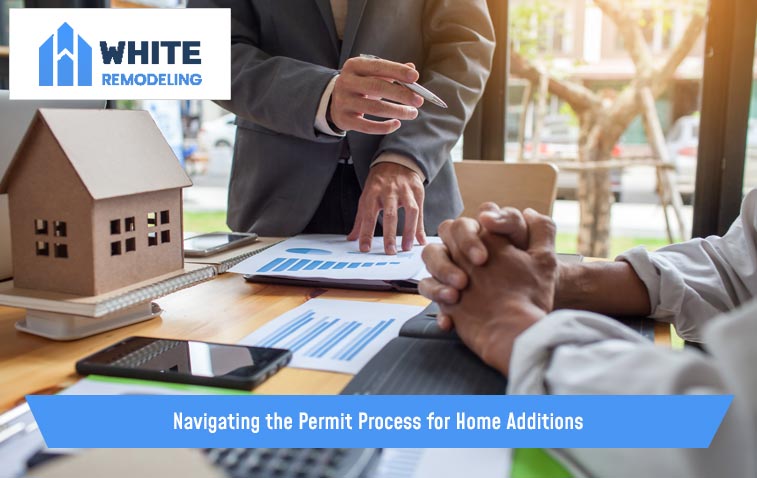Adding extra space to the house is very exciting. Whether you’re building a new bedroom or expanding your living space, getting a permit for a home addition is an essential step. Any construction without a permit can be illegal and can lead to legal problems. It is very important to be aware of the home addition permit process and follow it correctly.

The purpose of the permit process is to ensure that all construction work of your home addition project is safe and sustainable. Getting a permit allows government agencies to vet your project and approve it, ensuring that no part of your construction work is in jeopardy.
When you carry out construction work with a permit, it is ensured that the structure of your house will be sturdy and it will comply with safety standards. Getting a permit also means that your project is following local building codes, which are required for safety.
There are different types of permits for home additions. Some major permits include building permits, electricity permits, and plumbing permits. These permits ensure that each part is installed correctly and safely.
This permit is for changes related to the main structure. If you are erecting a wall, raising a ceiling, or constructing a new room, a building permit is necessary.
Electricity and plumbing permits ensure that electrical and water connections are installed safely and correctly in the home. This can avoid problems like fire or water leakage.
There are several steps in the process of obtaining a permit, and it is important to complete every step correctly.
Prepare all the necessary documents before applying for a permit. These include the house map, planning and other construction related papers.
After the application is submitted, it is reviewed by the local authorities. This phase can take some time, and sometimes authorities need more information.
Several inspections are carried out during construction to ensure that the construction work is going on correctly. Inspection ensures that every work is done correctly and safely.
Even after the permit work is completed, some maintenance is required so that everything is in order.
Even after the completion of the construction work, keep checking the structure of the house regularly. With this, any small problem will be caught in time and will be solved before it becomes a big problem.
Keep all the documents associated with your permit safe. These papers will be useful for you in case of any problem in future.
No new construction in the house is possible without a permit. This not only ensures the safety of your home but also keeps you safe from a legal point of view. By completing the permit process for your home addition correctly, you can make the structure of your home strong and durable. Carrying a permit is a wise decision that protects you from future problems.
A home addition may require building permits, electricity permits, and plumbing permits. Building permits are meant for works associated with the structure, while electric and plumbing permits are for electricity and water connections.
The time in the procedure can vary, but usually it can take a few weeks. The application review and inspection phase can take time, so have all documents ready ahead of time.
Yes, inspection is required during construction and after construction is completed. This ensures that everything is done correctly and safely. Inspection is an important part of the permit process.
Yes, permit papers can come in handy in the future. It is important to keep these papers safe so that you can show them in case of any problems in the future and avoid any legal or structural problems.